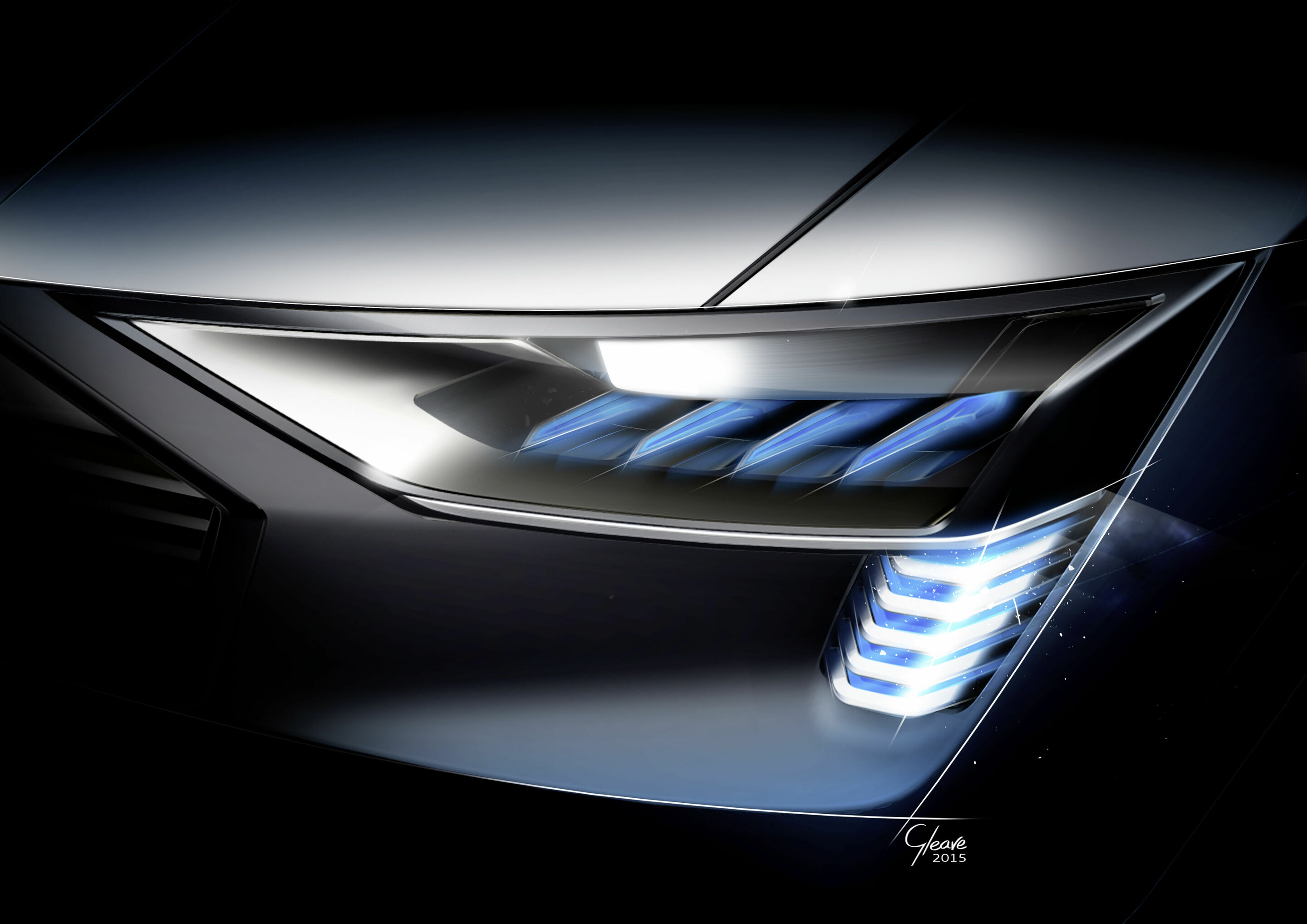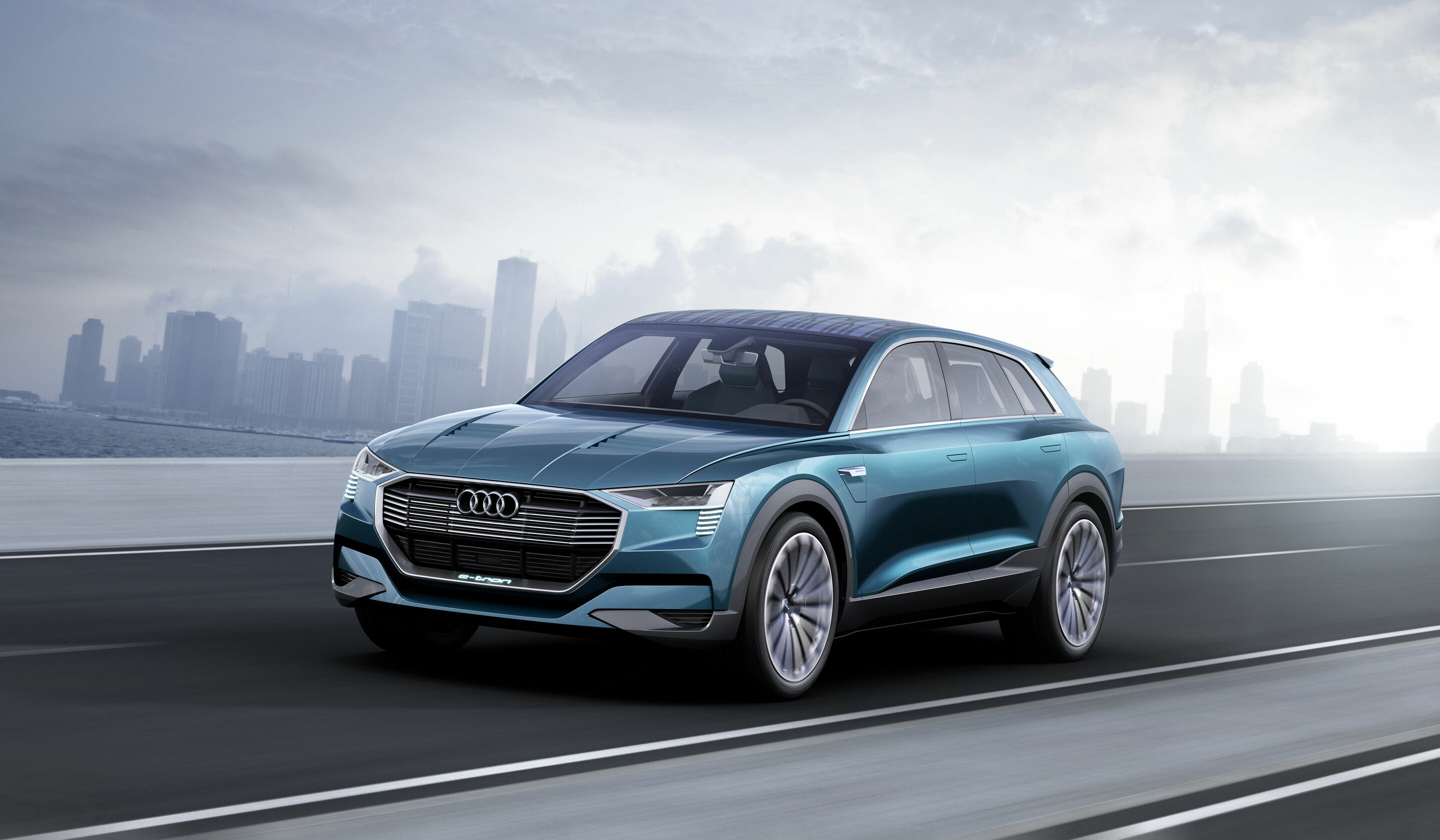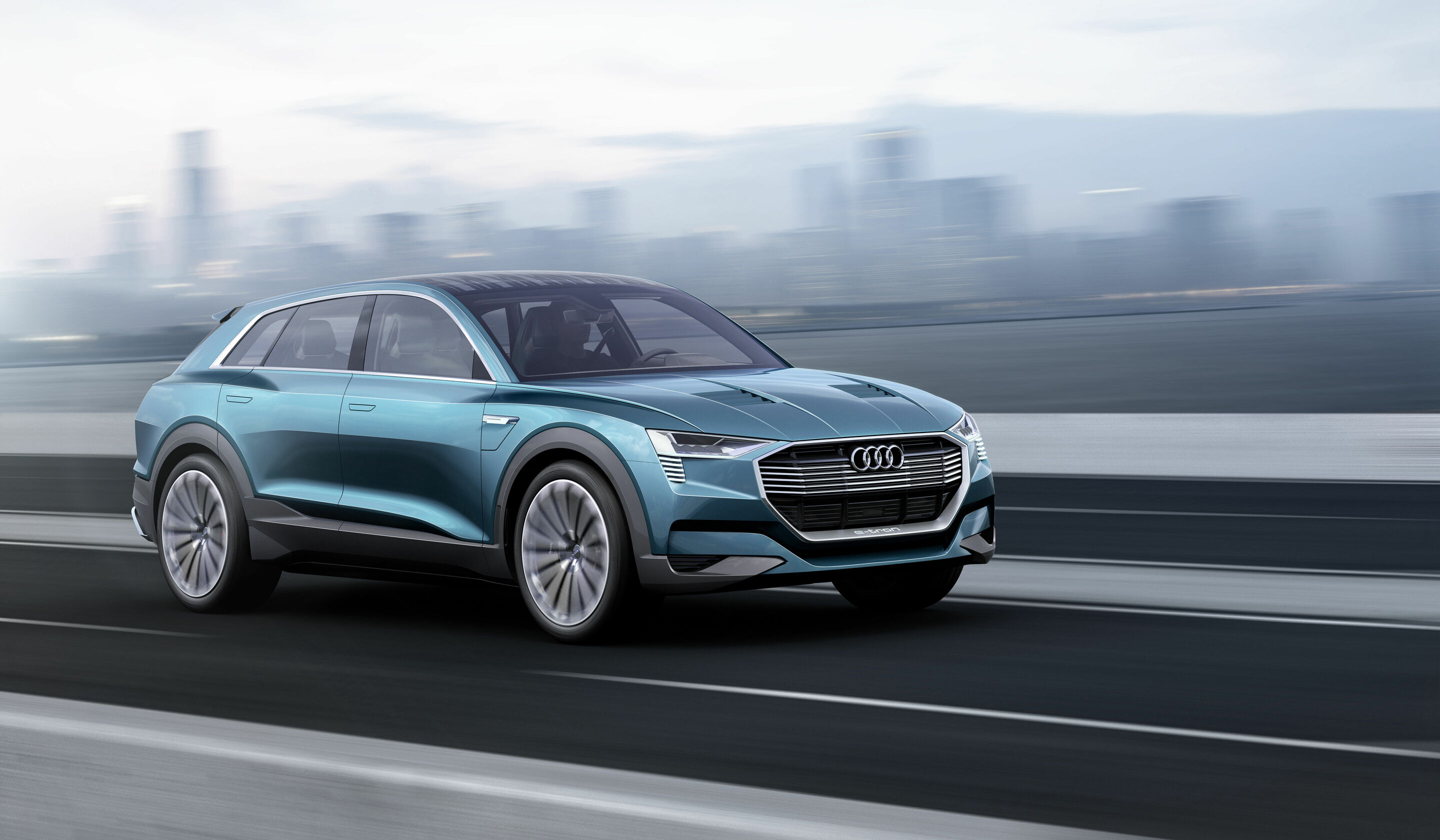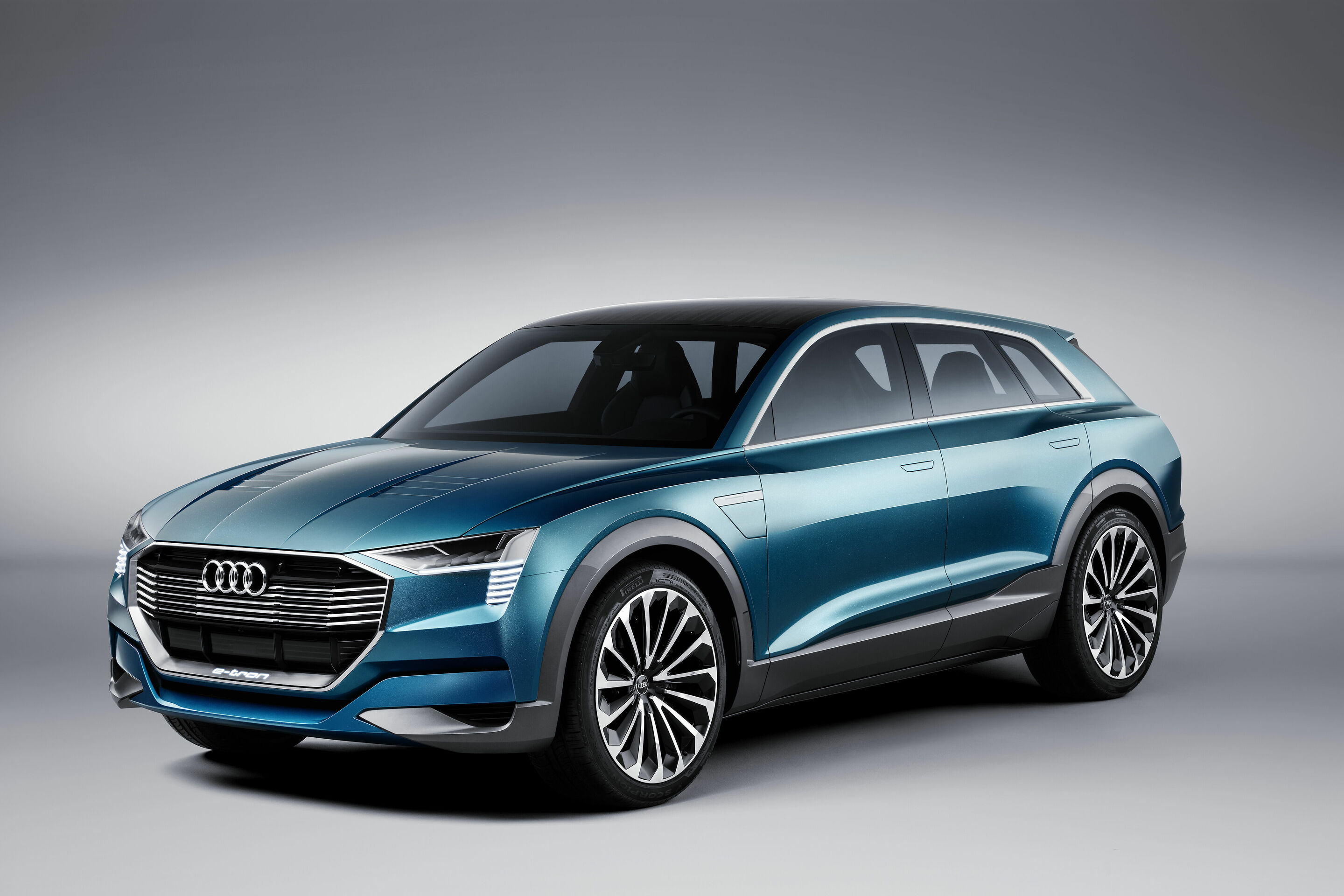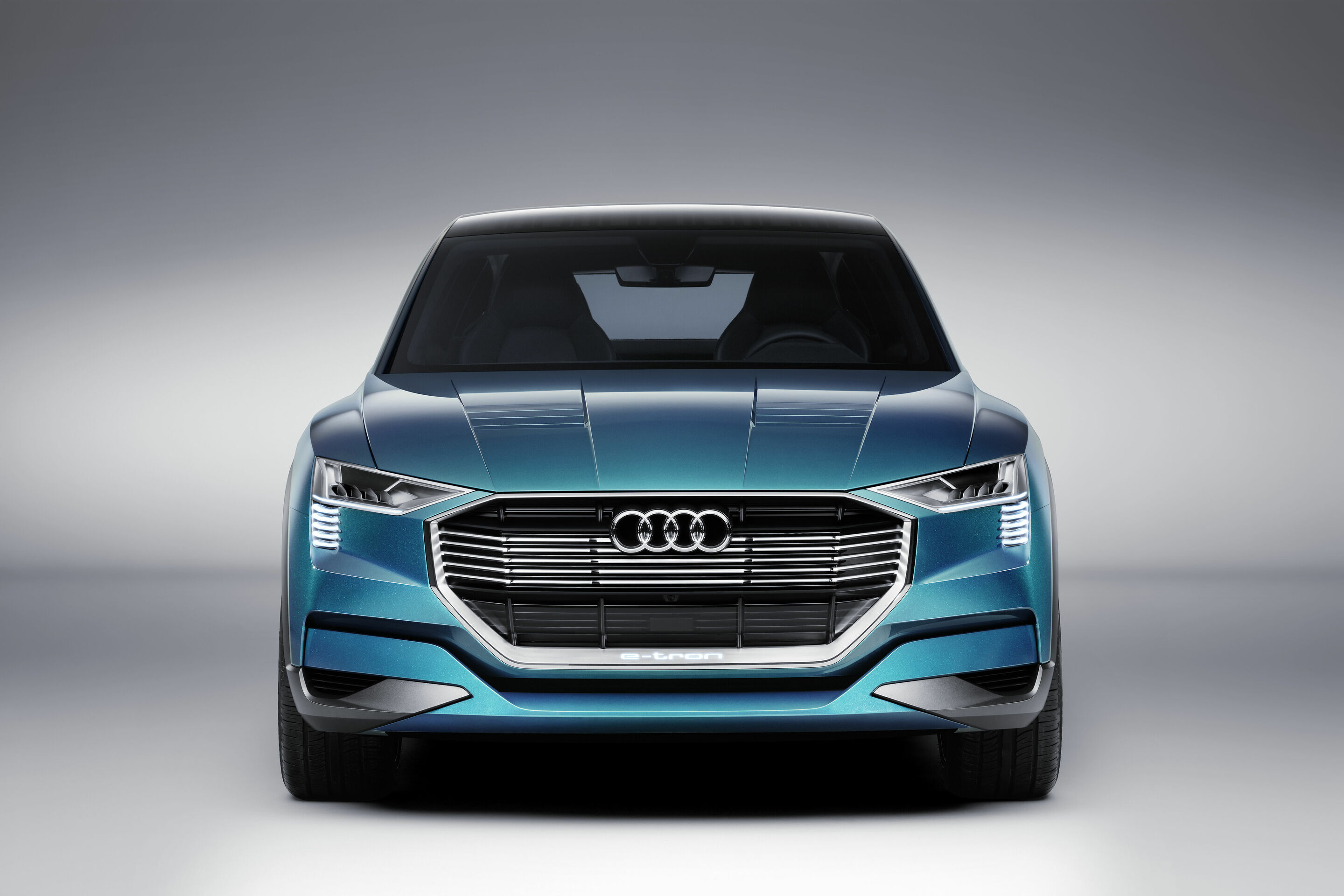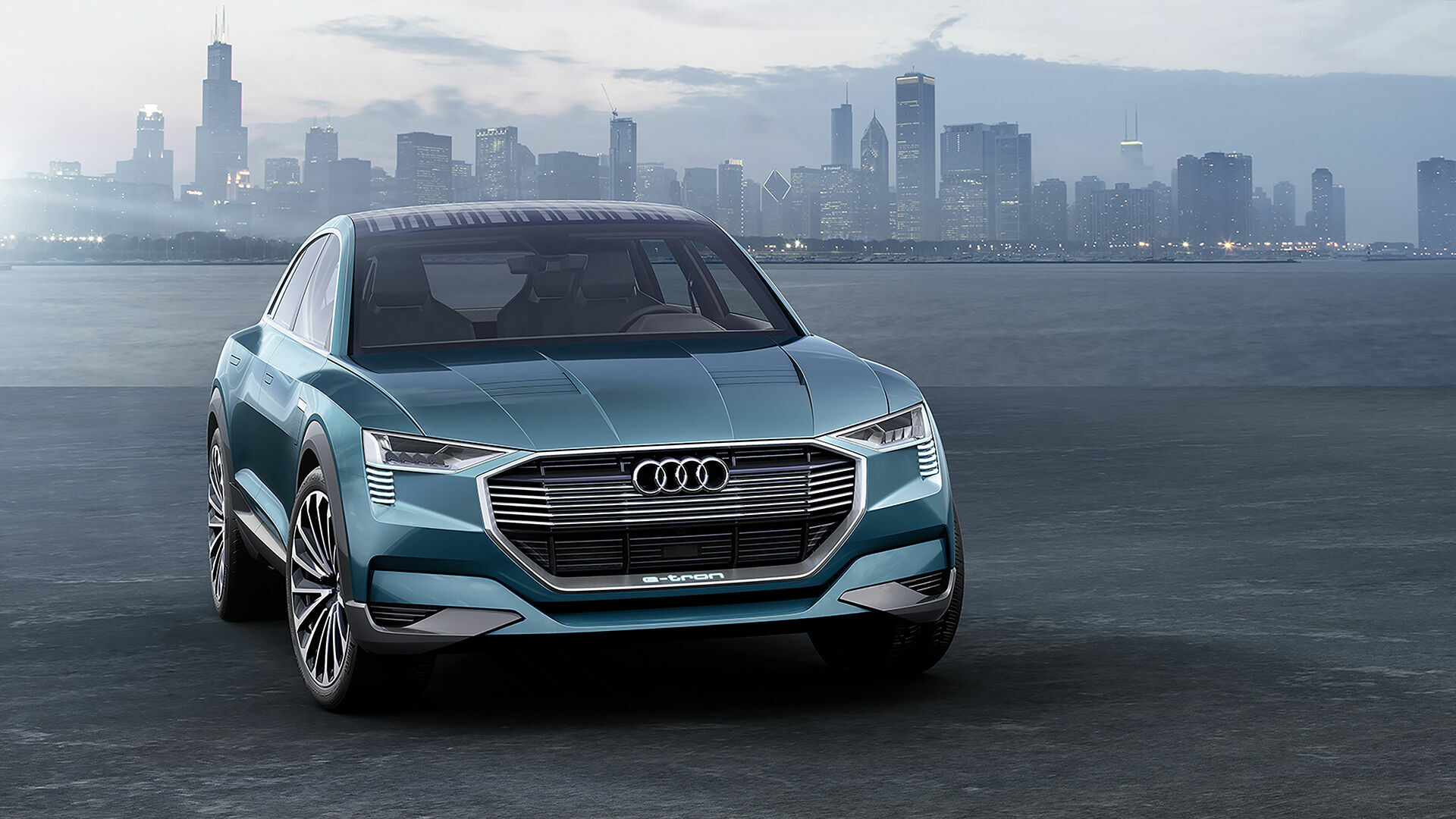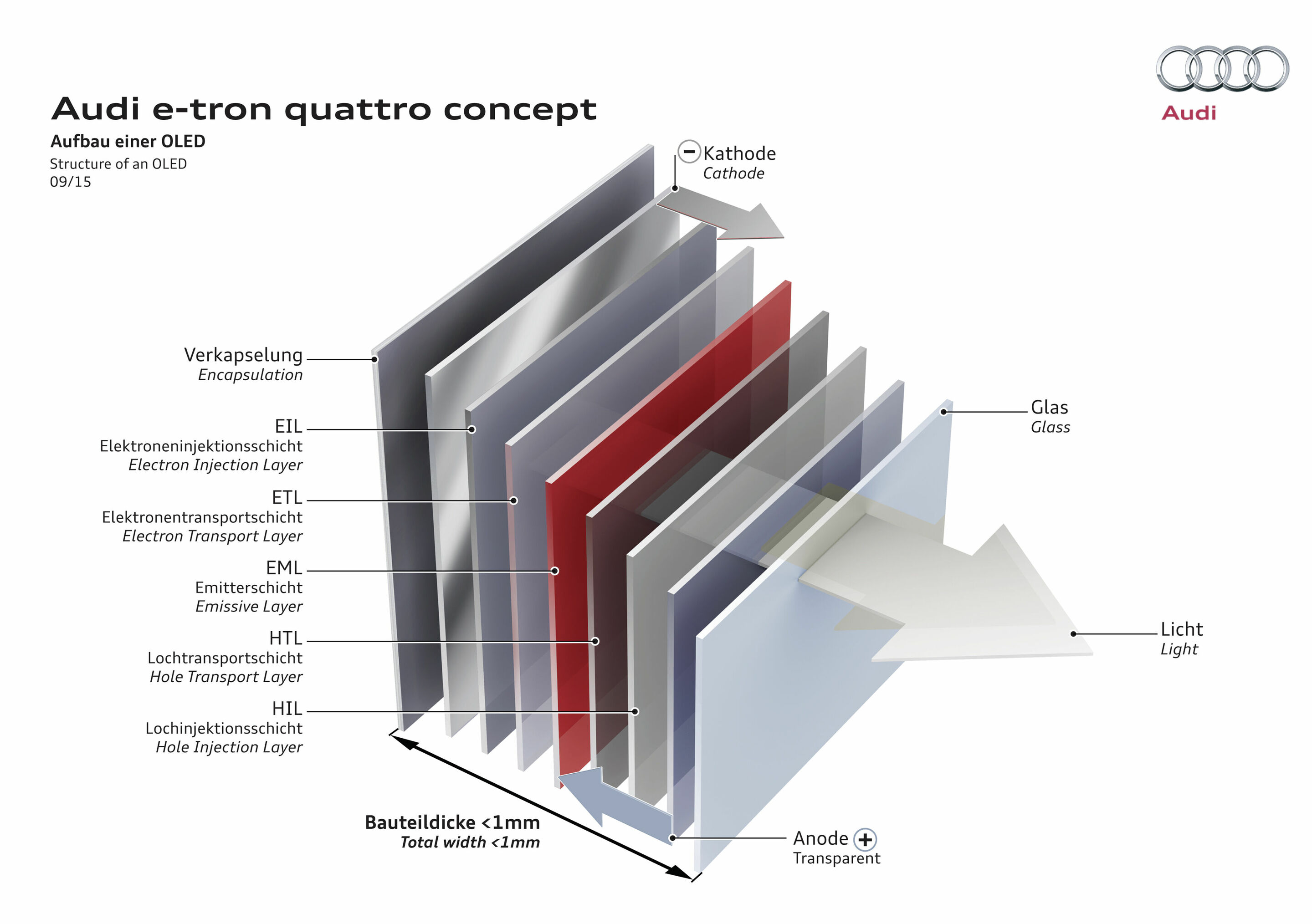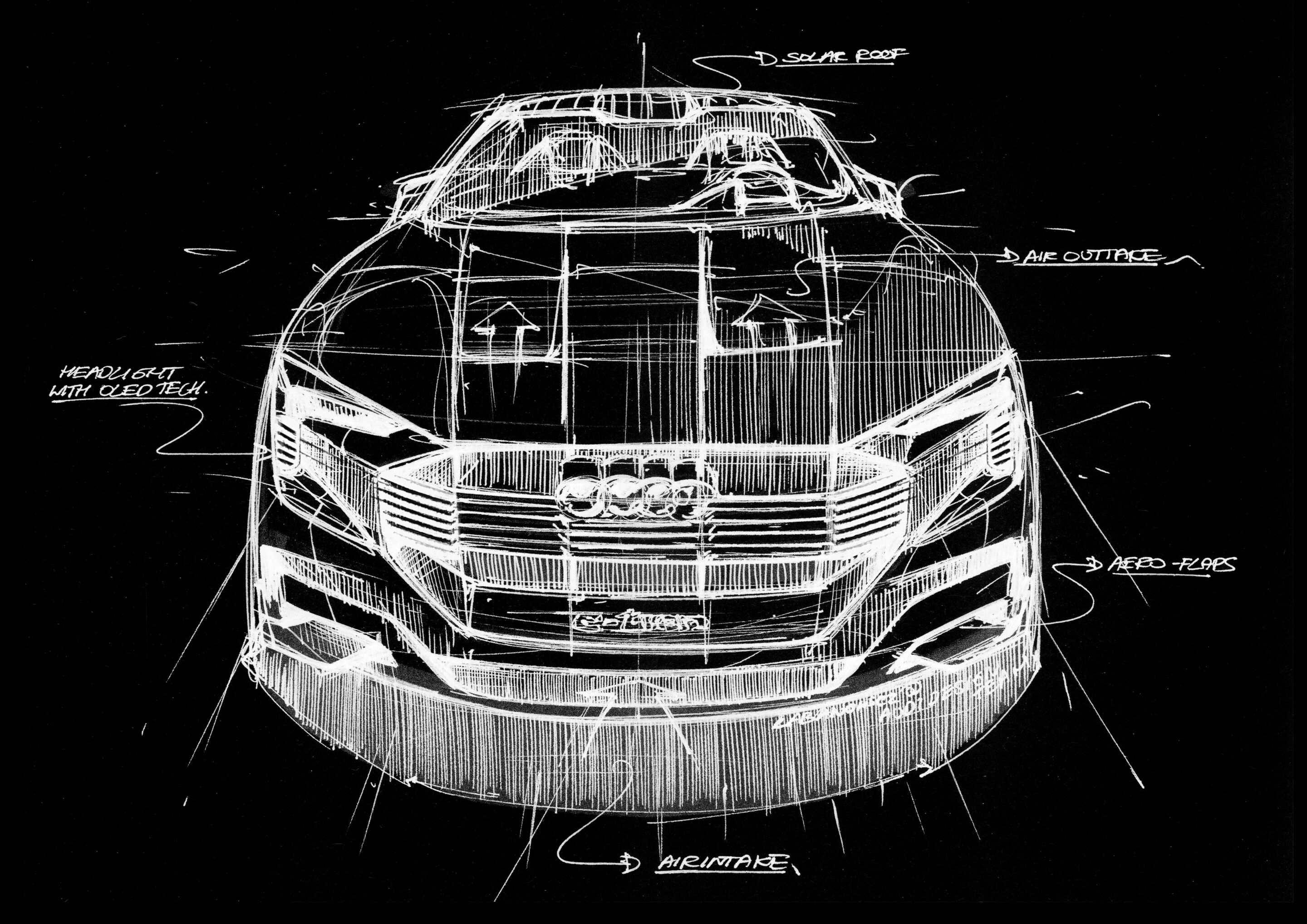e-tron light signature with new OLED technology: The front end
Back to overviewAudi presents the new design language of its e-tron models at the front of the technology study. The Singleframe grille emphasizes the width of the car and five horizontal aluminum slats link the five OLED elements of the light signature to one another. The top edge bears the Audi rings. The octagonal shape of the Singleframe and the four vertical sections in the background place the concept study visually in the Audi Q family.
The bottom section of the grille bears an e-tron logo that lights up briefly to greet the driver and passengers when they get in. Also integrated into this section is a visually subtle compact sensor rack that includes most of the sensors for the driver assistance systems and the new systems for piloted driving. Additional sensors are invisibly integrated into the skirts, with the advantage that they are well protected in minor collisions.
The Audi e-tron quattro concept generates all the main lighting functions with Matrix laser technology, the next step in the development of automotive lighting technology. Broken down into tiny pixels, the beam of light from the Matrix laser headlights can illuminate the road in high resolution and with precise control.
The bottom section of the front end houses a new, distinctive lighting signature comprising five lighting elements. Each of these combines an LED luminary with an extremely flat OLED element (organic light-emitting diode). The OLED elements emit a homogeneous light, are dimmable and can present a variety of lighting scenarios.
The Audi e-tron quattro concept marks the world premiere of Matrix laser OLED technology at the front of a vehicle and epitomizes “Vorsprung durch Technik” in the field of automotive lighting.
The front apron of the Audi e-tron quattro concept tapers into a spoiler drawn far forward. The inflowing air is supplied to the heat exchangers of the thermal management system, which among other things controls the temperature of the drive components. The air flows through the front end and is drawn out again through slots by the underpressure that exists above the engine hood. This effect makes it possible to reduce the electrical power of the fan. The four louvers in the hood open and close electrically depending on the driving situation and cooling requirement.
The equipment, data and prices specified in this document refer to the model range offered in Germany. Subject to change without notice; errors and omissions excepted.
